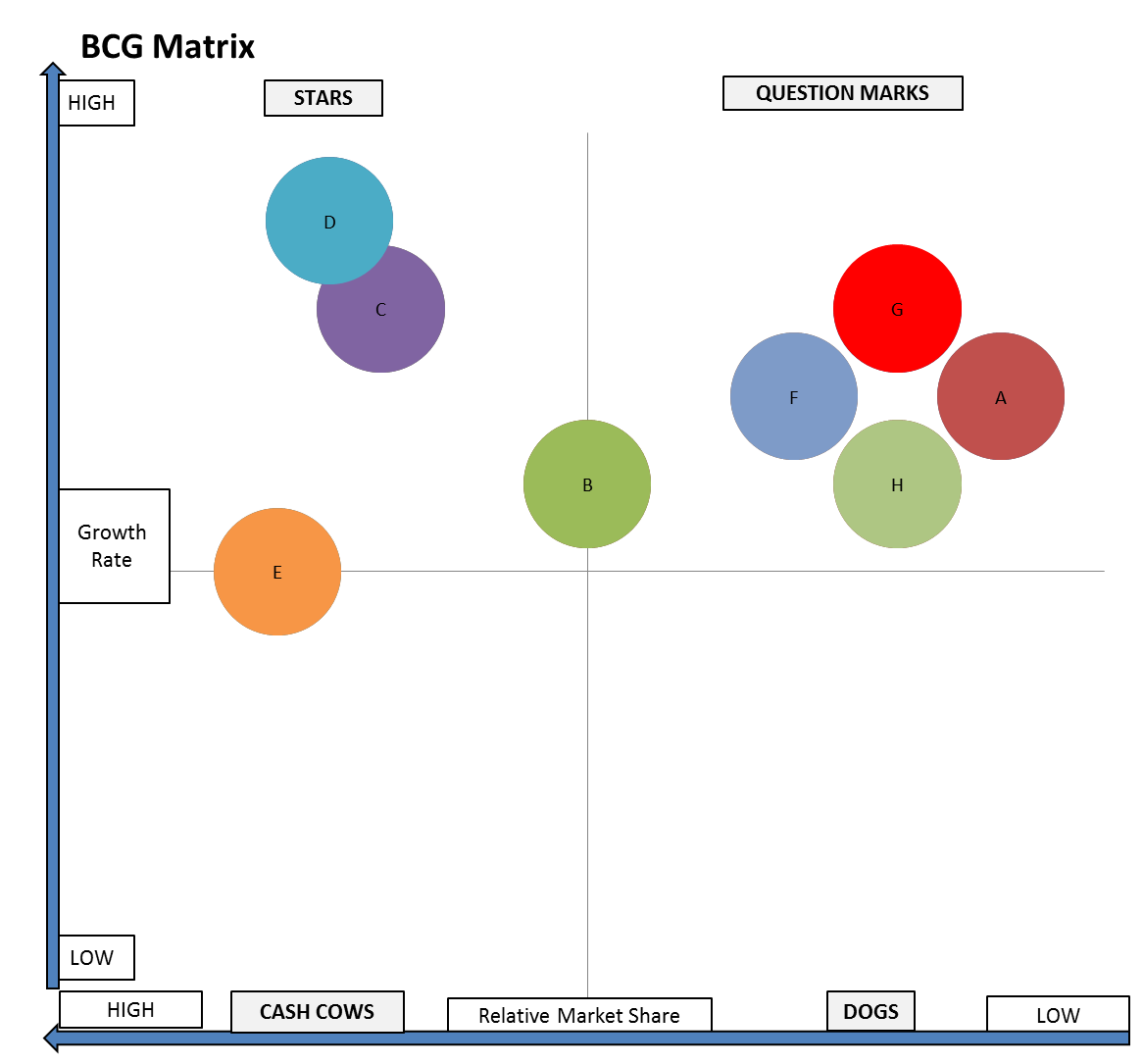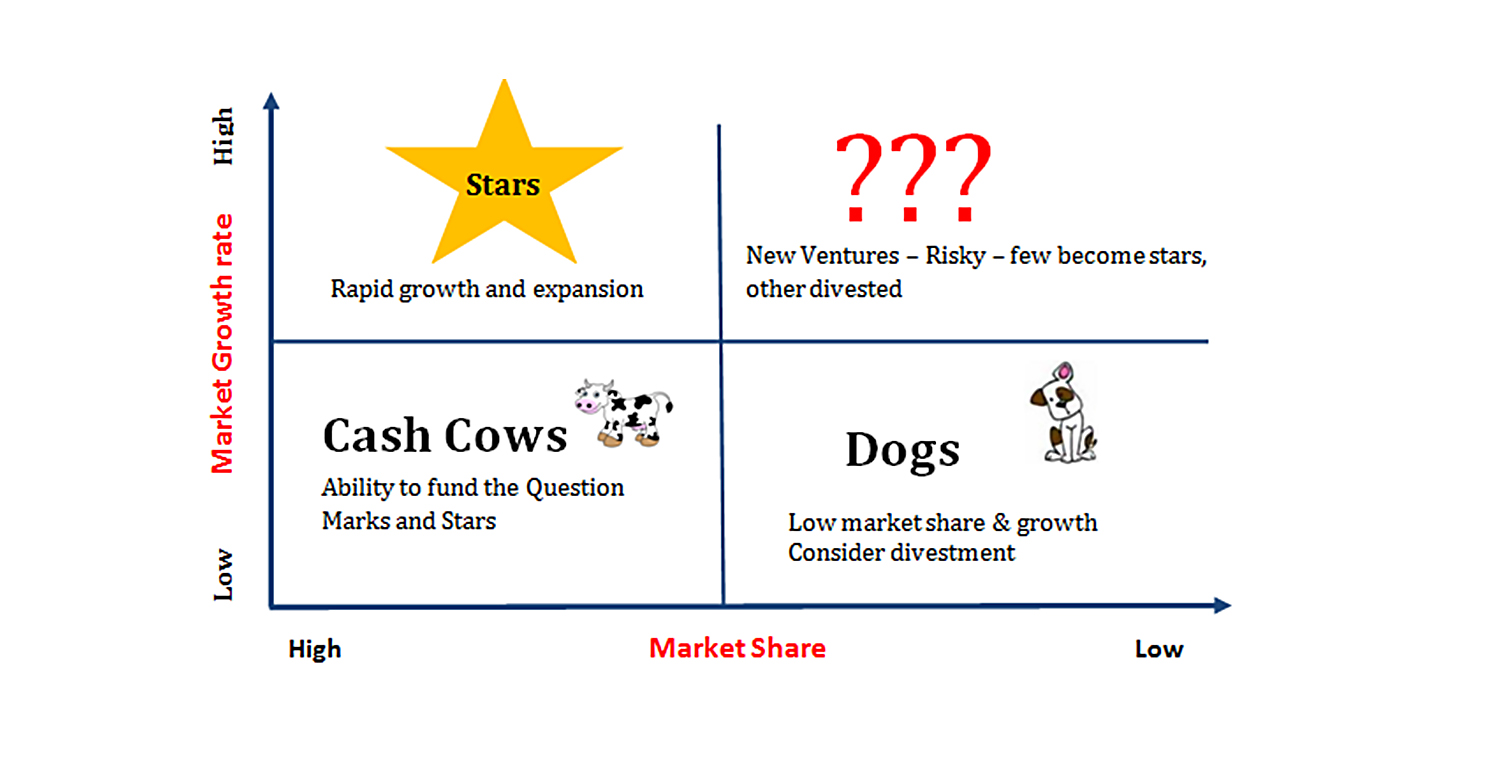


“Poor dogs” with their low market share in stagnating or slowly growing markets are considered to be discontinued products. Es geht darum, den Marktanteil zu halten, eine Umwandlung in ein „Fragezeichen“ oder einen „Star“ anzudenken oder einen rechtzeitigen Produktabstoß vorzubereiten. Als „Milchkuh“ bringt sie dem Unternehmen hohe liquide Mittel, welche in die financing von „Question Marks“, „Stars“ und „Poor Dogs“ fließen können (Abschöpfungsstrategie). Mit Eintritt in die Sättigungsphase mutiert der „Star“ zur „Cashcow“, welche einen sehr hohen Marktanteil und eine sinkende Wachstumsrate verzeichnet. After the "stars" have successfully passed the introductory phase, growth strategies are required in order to further expand their market position and to fend off competitors.Īs a rule, “stars” already generate profits before, in the best case scenario, as later “cash cows” they ensure high inflows of money. "Stars" operate as market leaders in a growing market.

The funds thus freed up can be invested in other products. Otherwise, companies have to cut back investments in good time so as not to produce “poor dogs”. Ideally, “question marks” turn into “stars” with the help of the investment strategy. Mostly these are new products that are in their initial phase and require high investments in order to be able to develop their potential. "Question Marks" operate in growth markets, but only have a low market share. Typically, a product begins as a “question mark” to become a “star” and mutate into a “cash cow” before being rejected as a “poor dog”. It is believed that every product has a specific one Product life cycle passes through. Their positions in the matrix can change over time. The individual products are assigned to one of the four fields based on market growth and their relative market share. Depending on the conversion, the area of the circle is larger or smaller. The individual products are drawn in as circles. Market growth = future opportunities for profit.Market growth = increase in sales volume and level of sales.Market growth = growth of the markets in which the products operate.Y-axis (vertical axis) represents the market growth: relative market share = measure of current competitive position.relative market share = own market share / market share of the largest competitor.X-axis (horizontal axis) shows the relative market share:


 0 kommentar(er)
0 kommentar(er)
